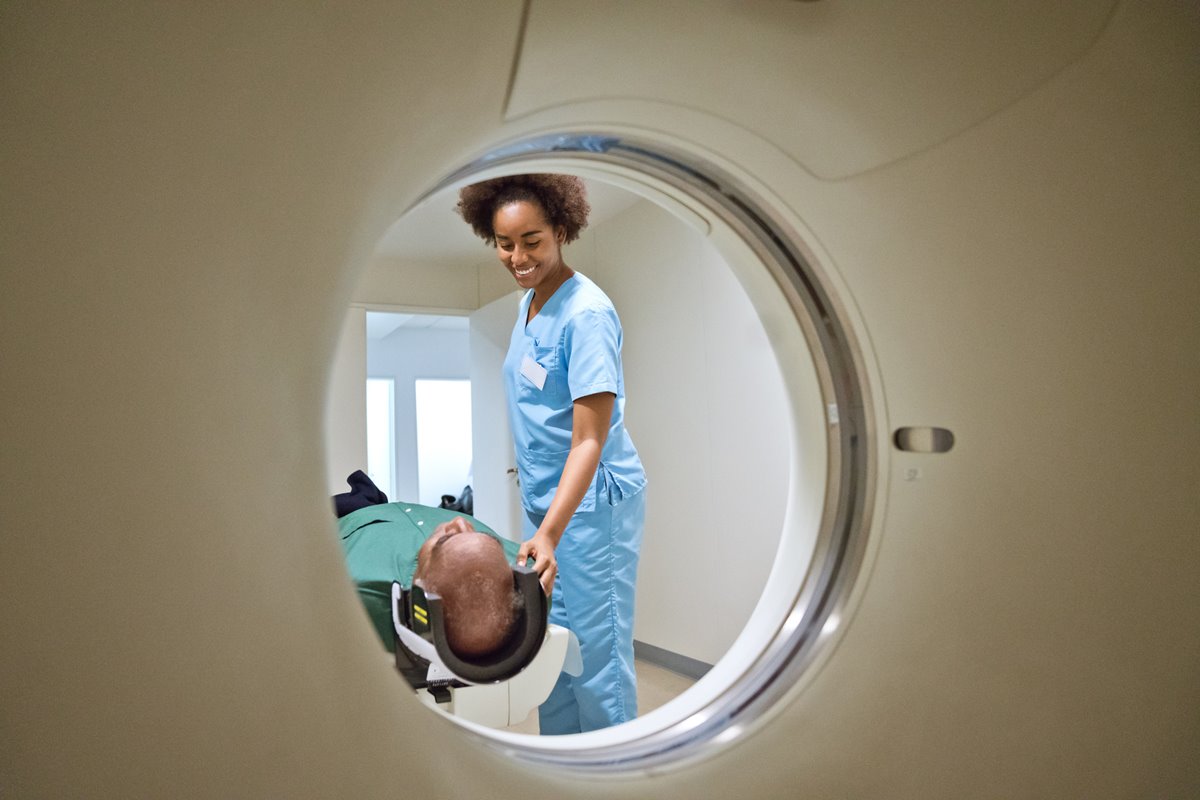Placing the patient at the centre of all we do and listening to the patient voice, was the focus of the UKIO Online 2020 ‘Patient Stories’ session, discussing how to improve patient-centred care along both diagnostic and radiotherapy pathways.
Sandie Mathers, chair of the College of Radiographers Board of Trustee, and Philip Plant, chair of the Society's Patient Advisory Group (PAG), opened proceedings by describing the work of the College and PAG. “Patients really know how the process works and we have to learn from them,” Sandie said.
The first presentation was from Derek Stewart, well known patient advocate, who was diagnosed with cancer in 1995. Passionate about patient participation and engagement, Derek explained to delegates that patient involvement, especially in research, is all about trust and learning from one another.
“The experience of Covid presents an opportunity to take research out into different communities, with more people coming from various cultures and experiences. Many professionals see patient involvement as an added burden rather than something that lies at the heart of good service development and good research, but it is about ensuring that research is relevant and has real meaning to the patients who take part. Ultimately, is it the right thing to do? Is it good quality research?” he said.
Singing from the same hymn sheet?
“Compassion is important in our practice and integral to the care patients receive but perceptions of compassion are vague and can differ from person to person, so it is vital that we define compassion within a radiotherapy context so that patients benefit and staff feel that they are delivering the best care that they can,” Amy Taylor told delegates during her presentation.
Amy, principal therapeutic radiographer: research and development at Weston Park Cancer Centre, presented findings from her study, ‘Using co-production to explore compassion and compassionate behaviours in radiotherapy’, undertaken as part of her CoR funded PhD research.
Project aims
- Generate a shared healthcare definition of compassion
- Identify how compassion is conceptualised and displayed
- Develop a conceptual framework model of compassion.
The project involved focus groups comprising therapeutic radiographers, student radiographers and patients/carers, together with co-production workshops, designed to develop a shared definition of compassion and for each group to better understand each other’s perspectives and needs.
“The process encouraged the radiographers to take a step back, and reflect and question their behaviours; and students really appreciated the feedback and learned a lot. Patients and carers really valued being asked to attend and that their opinions would be taken into consideration and used to benefit other patients,” Amy said.
The lady from London
“Reduced to a pathology rather than a person, I was just the lady from London with a subarachnoid; I wasn’t Jane anymore,” was how Jane Gooch, senior lecturer in diagnostic imaging at the University of Derby described her patient experience. She covered arriving in A&E with what she suspected was a subarachnoid bleed, to her eventual diagnosis and how she was treated as a patient by medical and healthcare professionals, right up to being discharged and her aftercare provision.
“I got lost in the system and was let down. I certainly did not get the experience that I expected and I lost trust,” she said. “Patients come into contact with the NHS when they are at their most emotional and vulnerable, which makes their negative feelings stronger and I certainly did not feel like I was respected or listened to.”
Following her negative experience, Jane was determined to help make a change so other people in her situation do not have to go through what she experienced. She currently sits on a NICE guidelines committee alongside medical and healthcare professionals, helping to change the pathway for patients like her.
Are we all on the same page?
‘Delivering informed measures of patient-centred care in diagnostic radiography’ was the title of the final presentation from Emma Hyde, head of diagnostic imaging at the University of Derby, who shared her findings from a large scale research project.
The aims of the project were to consider whether the meaning of PCC is aligned between service users and service deliverers, and to offer methods to increase PCC in diagnostic radiography.
An online survey and a combination of focus groups and semi-structured interviews with service users, clinical radiographers, and radiography managers researched their perspectives on what was important to them in terms of delivering or receiving care.
The results showed clear disparity between service users’ experience of care and service deliverers’ perception of the care being delivered.
“Often staff felt that there was no time to give psychological or physical care that patients clearly want and felt a lot of conflict between what they can and are able to do, and what they would want to do. It’s time to stop thinking about efficiency and be able to take more time with patients,” Emma said.
Watch the patient stories session and access all the UKIO Online 2020 presentations.
